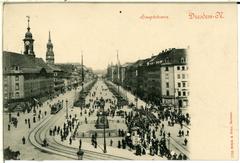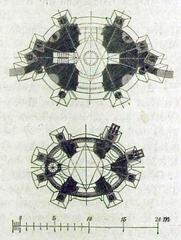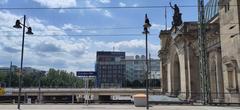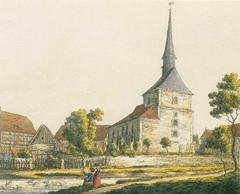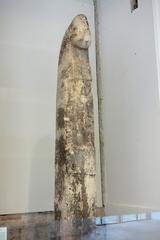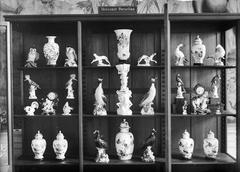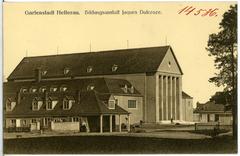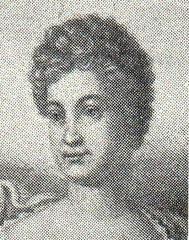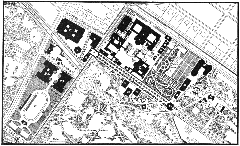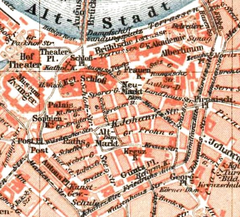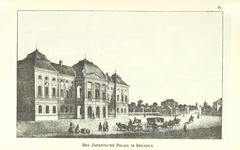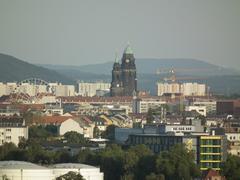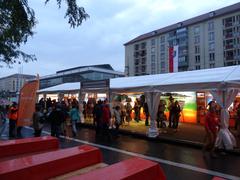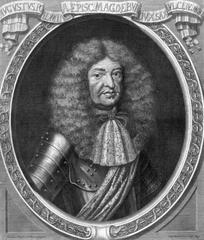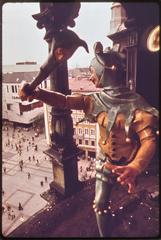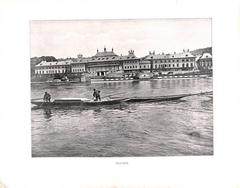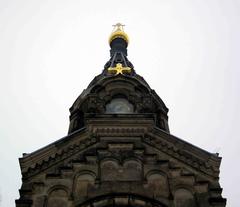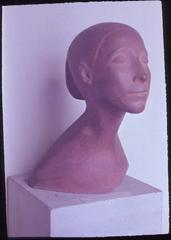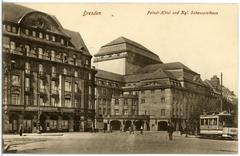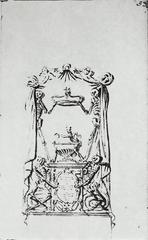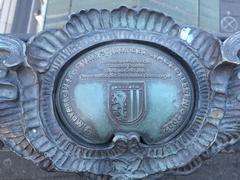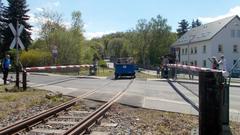Briesnitz Dresden Visiting Hours, Tickets, and Historical Sites Guide
Date: 04/07/2025
Introduction to Briesnitz Dresden Historical Site
Located on Dresden’s western edge, Briesnitz is a picturesque district renowned for its centuries-old history, architectural gems, and tranquil natural landscapes. Originally founded in 1068 along the Elbe River, Briesnitz evolved from a rural village into a suburban enclave after its 1903 incorporation into Dresden. Visitors can experience a compelling blend of medieval ecclesiastical architecture, garden city planning, and access to hiking trails along the river. This guide highlights essential landmarks—including Briesnitzer Kirche, St. Marienkirche, and the heritage-protected Garden City neighborhood—while providing up-to-date information on opening hours, ticketing, accessibility, and visitor amenities. Whether you seek medieval art, urban planning history, or serene nature, Briesnitz offers a peaceful retreat with deep roots in Saxon culture (dresden.de/tourism, Stadtwiki Dresden, Dresdenausflug).
Table of Contents
- Introduction
- Historical Overview
- Key Landmarks & Visiting Details
- Natural Attractions
- Cultural Life & Events
- Practical Visitor Information
- Visitor Tips & Highlights
- Frequently Asked Questions (FAQ)
- Nearby Attractions
- Conclusion
- References
Discover Briesnitz: History, Architecture, and Nature
Briesnitz is a district for explorers—offering medieval churches, early 20th-century residential landscapes, and lush riverside trails. Its peaceful atmosphere is complemented by vibrant cultural venues and well-preserved architectural heritage.
Essential Visitor Information
Opening Hours and Access
- Briesnitzer Kirche (Church): Open Monday–Saturday, 10:00 AM–5:00 PM. Sunday services and special events may affect hours.
- St. Marienkirche: Typically open daily, 9:00 AM–5:00 PM.
- Inner Briesnitzer Cemetery: Year-round, dawn to dusk.
- Garden City Briesnitz: Public neighborhood, accessible at all times.
Tickets and Admission
- Churches: Free entry; donations welcome.
- Guided Tours: Book through Dresden’s tourism office or local providers.
Getting There
- Tram: Line 10 from Dresden center; stops at “Briesnitz” and “Zschonergrund.”
- Bus: Several lines serve the district.
- Car: Parking available near main sites—observe local regulations.
- Cycling/Walking: Elberadweg and local paths connect Briesnitz to central Dresden and nature reserves.
Historical Overview of Briesnitz
Dating to 1068, Briesnitz originated as an agricultural village along trade routes and the Elbe. The 1903 annexation by Dresden ushered in infrastructure improvements—yet preserved the district’s rural core. Briesnitz’s architecture and streets still reflect its layered history, from Romanesque village churches to 20th-century cooperative housing (Dresden.de).
Key Landmarks & Visiting Details
Briesnitzer Kirche
A striking example of medieval ecclesiastical architecture, Briesnitzer Kirche dates to the early 13th century. Notable features include a nearly 100-meter-high tower, crypt, and restored medieval interiors. The churchyard contains centuries-old gravestones (Stadtwiki Dresden).
- Hours: Mon–Sat 10:00 AM–5:00 PM; Sundays variable.
- Admission: Free; donations encouraged.
- Guided Tours: Available by prior arrangement.
St. Marienkirche
This Romanesque-Gothic church, founded in the 12th century, is known for its stone tower, medieval frescoes, and Baroque altar. The surrounding churchyard contributes to its historic ambiance (Wanderlog).
- Hours: Daily, 9:00 AM–5:00 PM.
- Admission: Free; donations appreciated.
Village Green & Historic Farmsteads
Briesnitz’s village green is surrounded by well-preserved Saxon farmhouses and half-timbered buildings from the 18th and 19th centuries. Walking tours highlight these rural architectural treasures.
Briesnitz Manor (Gutshof)
Once a working estate, Briesnitz Manor now hosts community events. Visiting hours depend on scheduled activities—check local listings.
Garden City Briesnitz
Inspired by the Garden City movement, this early 20th-century neighborhood features cooperative-built homes with gardens and green space. Heritage status protects its unique urban planning and architectural style (Dresdenausflug).
Natural Attractions
Zschonergrund Nature Reserve
A haven for hikers, birders, and photographers, the Zschonergrund Nature Reserve offers peaceful trails along the Elbe, abundant wildlife, and distinctive Saxon flora.
Zschonermühle Watermill & Restaurant
Located within the reserve, the historic Zschonermühle watermill houses a rustic restaurant serving traditional Saxon fare.
- Restaurant Hours: Usually 11:00 AM–8:00 PM; check for seasonal changes.
- Nature Reserve: Always open; no entry fee.
Cultural Life & Events
Beatpol Music Venue
Beatpol, housed in the historic Gasthof Briesnitz, is a local cultural hub for live concerts, theater, and art (Dresdenausflug).
- Hours: Open for events, generally evenings from 7:00 PM.
- Tickets: Purchase online via official Beatpol website or at the box office.
- Accessibility: Wheelchair access available; public transport stops nearby.
Local Festivals and Community Events
Annual events, including the Briesnitz Village Festival, celebrate local traditions with folk music, crafts, and regional cuisine. Visit Dresden’s tourism website for event calendars.
Practical Visitor Information
Accessibility & Transportation
- Public Transport: Tram line 10 and several bus routes connect Briesnitz to Dresden’s center.
- Parking: Available near major sites; limited spaces, so public transport is recommended.
- Cycling/Walking: Well-marked trails connect Briesnitz with the Elbe and city center.
Guided Tours & Visitor Amenities
- Tours: English-language guided tours are available by arrangement.
- Amenities: Cafes, bakeries, and guesthouses provide local hospitality. Riverside parks and walking trails offer recreation.
Visitor Tips & Highlights
- Best Time to Visit: Spring and summer feature blooming gardens and festivals; cultural sites open year-round.
- Photography: Capture the blend of medieval and garden city architecture, scenic Elbe views, and historical sites.
- Local Customs: Respect privacy in residential and sacred areas; observe quiet hours.
Frequently Asked Questions (FAQ)
Q: Are there entry fees for Briesnitz’s historical sites?
A: Most sites, including Briesnitzer Kirche and the garden city area, are free. Some guided tours may charge a fee.
Q: Are guided tours available in English?
A: Yes, arrange in advance with Dresden’s tourism office or local providers.
Q: Is Briesnitz accessible for visitors with mobility challenges?
A: Some areas, like the church hill, may be difficult; contact the tourism office for detailed information.
Q: Where can I eat or stay in Briesnitz?
A: Options are limited, but nearby districts offer a range of dining and accommodation.
Q: How do I reach Briesnitz from Dresden city center?
A: Tram line 10 is the most direct public transport option; parking is available for drivers.
Nearby Attractions
Explore neighboring districts such as Leutewitz and Omsewitz, which feature additional historical churches, green spaces, and rural Saxon heritage (Dresdenausflug).
Conclusion
Briesnitz stands as a testament to Dresden’s layered past—offering medieval churches, garden city architecture, and vibrant cultural venues in a serene setting. With easy public transport connections, free access to most sites, and opportunities for guided tours, Briesnitz is perfect for those seeking an authentic, off-the-beaten-path Dresden experience. For up-to-date schedules, event listings, and digital audio tours, consult official tourism resources and the Audiala app.
References
- Briesnitz Dresden: Visiting Hours, Tickets & Historical Sites Guide, 2025, Dresden Tourism (dresden.de/tourism)
- Briesnitz Dresden: Visiting Hours, Tickets, and Historical Sites Guide, 2025, Dresden.de (dresden.de/en/tourism/attractions/art_and_culture/museums-in-dresden.php)
- Exploring Briesnitz: Visiting Hours, Tickets, and Top Historical Sites in Dresden, 2025, Dresdenausflug (dresdenausflug.de/dresden/briessnitz-leutewitz-omsewitz/)
- Practical Visitor Information for Briesnitz Church, Dresden, 2025, Stadtwiki Dresden (stadtwikidd.de/wiki/Briesnitz)
- Dresden air raids remembrance, 2025, diesachsen.de (diesachsen.de/en/politics/80-years-after-the-air-raids-dresden-remembers-and-warns-2989308)
- Things to do in Dresden, 2025, Germany Footsteps (germanyfootsteps.com/things-to-do-in-dresden/)
- Dresden Landmarks, 2025, Delve Into Europe (delveintoeurope.com/dresden-landmarks/)
- Dresden Travel Guide, 2025, North Abroad (northabroad.com/dresden-travel-guide-best-things-to-do-see/)


